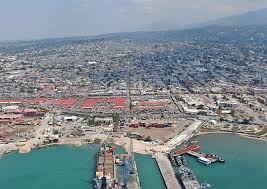The Current Landscape of Port-au-Prince, Haiti

Introduction
Port-au-Prince, the capital of Haiti, holds significant importance as the country’s political and economic hub. With a history marked by natural disasters, political instability, and ongoing development challenges, the city is at a critical juncture. Recent events indicate a struggle for progress amidst ongoing social and political difficulties, making it essential to examine the current state of Port-au-Prince and what it means for its residents and the international community.
Current Events and Challenges
In recent months, Port-au-Prince has faced increased violence and insecurity, primarily due to the actions of armed gangs. Reports indicate that these groups control substantial areas of the city, leading to widespread fear among residents. This surge in violence has hindered daily life, affecting economic activities and educational institutions. According to a study by the United Nations, about 1.5 million people in and around the capital are in urgent need of humanitarian assistance, resulting from the ongoing conflict and economic decline.
Additionally, the country is grappling with the impacts of climate change. Port-au-Prince remains vulnerable to natural disasters, such as hurricanes and earthquakes, which can lead to devastating consequences. In 2021, heavy rainfall and flooding wreaked havoc across the city, displacing thousands of families and leading to calls for improved infrastructure to better prepare for future occurrences.
Efforts Towards Improvement
In response to these challenges, various non-governmental organizations (NGOs), alongside international partners, are working tirelessly to address the humanitarian crisis in Port-au-Prince. Initiatives aiming at providing food security, sanitation, and educational support are being implemented, although they face logistical hurdles due to insecurity.
Moreover, the Haitian government, despite its limitations, is calling for international assistance to reinstate law and order. Recent proposals to increase security forces in the region highlight the urgent need for stability to encourage economic growth. Discussions at the international level have also commenced, focusing on aid packages tailored to support long-term recovery and resilience in Port-au-Prince.
Conclusion
The future of Port-au-Prince remains uncertain as it navigates the labyrinth of violence and socio-economic challenges. However, significant attention from both local leaders and the international community indicates a recognition of the city’s critical state. As efforts towards improvement continue, the resilience of the Haitian people serves as a beacon of hope. With the right strategies and support, Port-au-Prince has the potential to transform its narrative and pave the way towards a brighter future.









